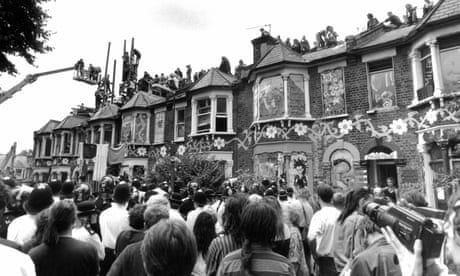
Thirty years ago, more than 500 activists united to save a street – and their actions marked a major turning-point in the environmental movement
Walking through Leyton, in east London, you could easily miss Claremont Road. It is hardly a road at all, but a stubby little side street between terrace houses that ends abruptly in a brick wall. But when it comes to the history of direct action, this could be one of the most significant sites in England. Thirty years ago, in November 1994, the scene here was very different: 700 police officers and bailiffs in riot gear marched into a significantly larger Claremont Road and waged battle against about 500 activists, who were dug in – some of them literally – against efforts to evict them.
The activists occupied rooftop towers, treehouses, underground bunkers and even secret tunnels. It took three days to get them all out. In retrospect, the “Battle of Claremont Road”, as it came to be known, was an almost unbelievable event. “I talk about the three C’s that underpin this type of activism: creativity, courage and cheek,” says campaigner Camilla Berens, who was there. “It set the template for the next 20 or 30 years of how to do responsible disruption.”
Continue reading...